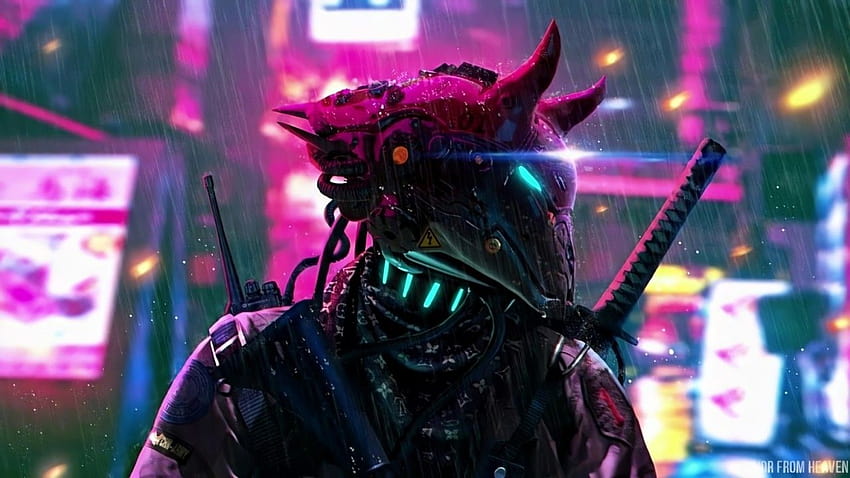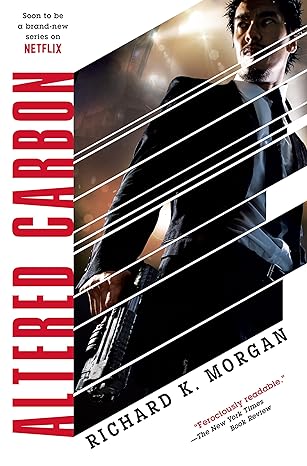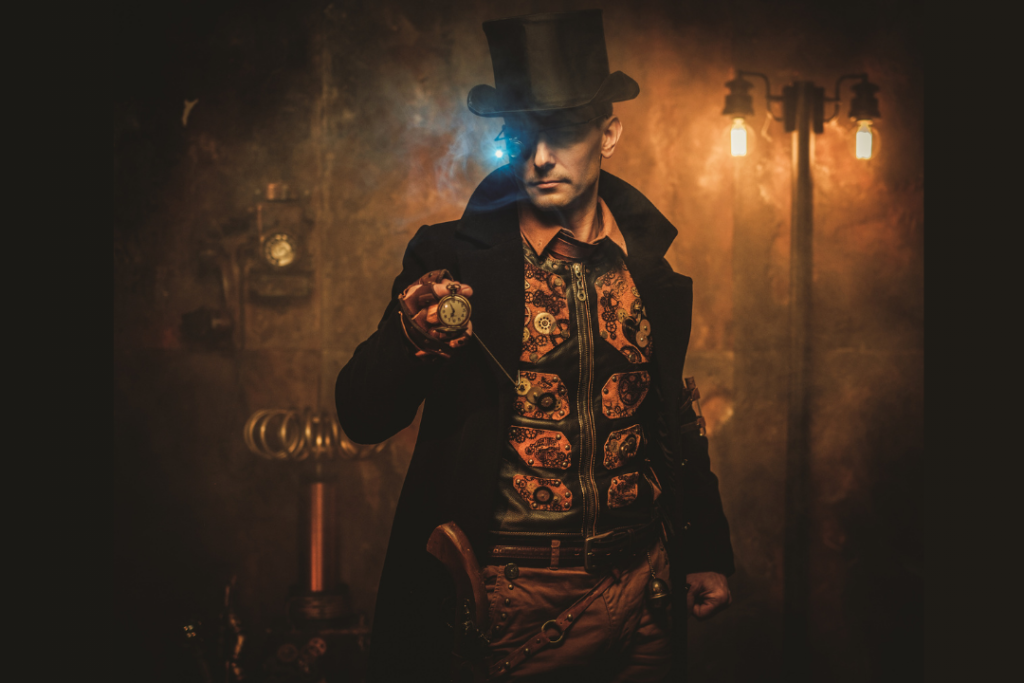Bionics & Beyond:
SFF Stories That Celebrate the Cybernetic Frontier
Welcome to a world where flesh and circuitry coalesce, where the boundaries between humanity and machine blur, and where the future is a tapestry woven with threads of cybernetic wonder. In the realm of Science Fiction and Fantasy (SFF) storytelling, the concept of cybernetics has long been a captivating muse, inspiring authors to craft intricate narratives that delve into the realms of human enhancement, artificial intelligence, and the moral quandaries of technology. It’s a world where characters shed their biological constraints and embrace the allure of cybernetic limbs, neural interfaces, and virtual realities. So, fasten your neural implants, adjust your augmented reality lenses, and join us on a journey through the electrifying landscapes of SFF storytelling, where cybernetics reign supreme and the possibilities are as boundless as the digital frontier itself.
Is there a moral or ethical dilemma covered in SFF novels where characters undergo cybernetic enhancements? Absolutely. Unique perspectives on these themes include digital consciousness, intelligent machines, genetic engineering, cloning, artificial beings, and wearable technology (which has its own themes of privacy, surveillance, and possibly identity).
Some novels/movies that come immediately to my mind are:
The Ship Who Sang by Anne McCaffrey explores the life of Helva, a young girl born with severe physical disabilities who becomes a “shell person.” In McCaffrey’s universe, shell people are individuals whose brains and nervous systems are transplanted into the central processing units of advanced starships, effectively becoming the ship’s brain. Themes of identity, humanity, and the symbiotic relationship between humans and machines are explored.
AI: Artificial Intelligence, directed by Steven Spielberg, is a cinematic adaptation of the short story Supertoys Last All Summer Long by Brian Aldiss. While the original story doesn’t explicitly focus on cybernetics, Spielberg’s film does incorporate elements of artificial intelligence, robotics, and cybernetics to explore themes of humanity, consciousness, and the ethical implications of creating intelligent machines. The main character, David, is a highly advanced robotic boy designed to mimic human emotions and behaviors. David’s creators hope to provide a child-like companion for parents who have lost their own children or who cannot have children. Think of that possibility. These AIs are able to mimic human emotions. This raises ethical dilemmas throughout the film of the nature of consciousness in artificial beings, the rights and treatment of such beings, the emotional bonds between human-robot relationships, society’s desire for perfection, and the consequences of pursuing an idealized version of humanity through technology.
Drayton’s Discoveries, Book 1 by JL Nich (yes, it’s mine). The main character, Herman Drayton, an ex-NASA pilot, was given cybernetic limbs in this future Space Opera novel. For which I gave him 3 extra inches of height. He now stands over 2 meters. Read a sample of his description here:
Drayton’s Discoveries, Book 1, Partial Sample Chapter 1
His bushy gray-haired eyebrows dipped down from the worn NASA ball cap, separating from his thicker hairline, as Dr. Herman Drayton’s focus was disrupted by a small gauss meter within the nearby vid panel. His intense navy-blue eyes narrowed. The meters’ jerky movements distracted him while he scanned through the millions of bits of scrolling code to discern specific sequences of known elements that could be found and “acquired” for a marketable sale on the galactic market. He scratched his forehead, baring his teeth. Finding the right zero, one, and two sequences of combinations within the rapidly falling matrix of numbers to pinpoint possible findings of gemstones, minerals, or even specific liquids that might indicate areas to further pursue should be his only focus.
Knowing he only had one hour’s worth of dedicated ship energy, his thick mustache twitched as he tried to concentrate. That blasted bouncing needle, vacillating between high and low readings of magnetic feedback, quashed the endeavor. Reaching up, he tapped the virtual screen to hopefully stop the strange behavior, a long-ago habit he perfected while flying some rather antiquated aircraft in his previous NASA pilot career. Of course, it was an electronic display and not the actual gauge. His efforts did stop the tick for a moment. He quickly went back to the central monitor and its rapidly scrolling data.
The electro-metric scanner hummed loudly within the ship’s walls, drawing almost 65 percent of power usage, as its sensors roamed over the charted but unexplored planet surface below, bouncing data back up within the ship. Given the limited use to drain the reserves, Herman did not need any distractions. Although his programming would eventually parse the data findings, his sharp eyes and equally keen mind captured and interpreted the information flying across his system screens almost without thought.
That little movement continued. Seen only by his peripheral vision, its dance stirred memories of younger days inside the fighter plane, a discernible frolicking image he perceived outside both sides of his jet canopy during takeoff- the rush of speed or the mirth of death’s laughter. Whatever caused them, those wind streams captured his aircraft in its arms and hurtled him through space. Back then, as a cocky, young pilot, risking a quick look to either side, cleared the murky death hands to grasp, but not so this time. As if cavorting in the throes of a frisky tango, the needle improvised its back-and-forth action, pausing to complete a complex quivering before rushing onto the next. Intense light blue eyes narrowed a hard gaze at the offensive needle. He looked at another sidebar to determine the radiation levels and found the readings nominal.
“Why would this magma-filled dirt ball tick off my magnetic relay? We are over 12K clicks above the bloody surface,” he thought aloud as he studied his equipment, his American southland Georgian regional burr sounded dry and edgy. A magnetic trigger being read this far from the surface would hypothesize that Atax exceeds the magnetic field of 0.00005 tesla of Old Earth. No big deal with that agreement since the tiny planet did attract more than one moon. But ISC recorded the core as dense, without movement. Unlike Old Earth’s partially molten center. The center at which the motion within the molten core makes the core a magnetic object. So, what would cause a higher magnetic reading if the planet’s composition itself was not a factor? He was not often stymied by unexplained readings.
Growling with frustration, he threw down his electronic stylus on the nearby data sheets and reached up to swipe the surface of a nearby comm. An impatient voice broke through, filling his lab with a deep, rumbling gruffness.
“What’s up, Drrr. Drrrrayton? I am fourrr of my six eyeballs deep in floating schematics and do NOT want to blink.” Kut Brugg, the captain of the dubiously named Icarus’ class six Starchaser, tended toward the cranky side of the Trabid species’ nature when he was not in the mood to deal with interruptions, which happened often. His inflection of rolling R’s seemed to rumble on forever in his deep baritone voice.
“Sorry to stop Spaceball madness strategy, Captain Brugg, but I’m getting a strange reading bouncing up to us from the planet, and I need to dig a little deeper,” Herman remarked derisively. He’d heard detailed gossip about the Captain’s addiction to galaxy sports. Internally, he regarded their current figurehead as little more than a brute with a title. Brugg’s idea of handling a delicate situation was to pound it into dust and have his underlings clean up the mess. The plus side of having a tyrannical Trabid be in charge of Icarus’s activity was that Brugg was not observant. That bad habit was quite useful, at times, to his human Science Officers. But today was not the day to quickly circumvent activity. Herman had to go through the Captain to enter a phase of discovery by disturbing the planet. “Do you think we could send down a slug-bot to get some samples?”
A moment of silence was endured. A heavy sigh ensued through the com.
“My team alrrready plummeted in the loserrrr’s brrracket anyway. I’ll go ahead and courrrse corrrrect, but I don’t want to go atmospherrric without cause. Ask the LT. forrr the bot.” Brugg’s voice rose slightly from the deep bass timber as he mentioned the ship’s electronics expert Lieutenant Jor Parker, an exotically beautiful Alteric female, whom Drayton suspected the Captain enjoyed staring at with at least three of his six eyes- regardless of where she was in a room. “I’ll have Petie brrrring us down to 9000 clicks.” His voice growled through the audio.
Herman grimaced at the mention of crew member Petie ‘can’t-shut-up’ Brock, the only other human crew member of the contract reconnaissance team. He was the primary pilot of the Icarus, hired for his unquestionable skills in that regard. However, his capability as an adult human was in serious doubt. His features resembled the younger side of a pimply-faced teenager, and for Herman Drayton, well into his middle age at sixty years, he just couldn’t seem to feel safe with that kid behind the wheel.
Ignoring that familiar sinking sensation that occurred whenever Petie was mentioned as driving their ship, Drayton nodded in agreement. Nine thousand clicks would take less time for a bot to drop, and it was far enough away to allow time for any emergency action if necessary.
“What arrre we looking at?” The question from Brugg startled Herman, who’d already begun to mentally list his specific bot request in his head.
He glanced back at the jumping needle on the dial and unconsciously rubbed a finger along the side of his once-broken nose. “Not sure yet, but my nose itches. Comm off.” Herman Drayton smiled and imagined all six eyeballs of Brugg’s flat features widening at that remark. The last time Drayton’s nose “itched”, they found a pure, deep green Grabble nugget on some barren planet the size of an Alteric shill coin, large enough to cover his human hand and valued high enough to buy the electrometric scanner they now used.
With a grunt of sudden energy, he pushed back from the data screens and stood. Both his titanium leg prostheses pinched slightly where his mid-thigh sleeves were inserted. He wiggled his metal knees to adjust and relieve the draw on his muscles. Herman still felt like a whiny bitch trying to reconcile the false limbs he now used to his own missing flesh. But it had been years now. His twenty-eight years of active service in Earth’s space patrol forces provided the nice benefit of a survivor’s income and superb medical when his flight craft was caught too close to a rogue nova…
There are so many ways to incorporate cybernetics it makes my writing nose “itch”. Check out this list and some books that use them.
- Cybernetic Enhancements: The portrayal of characters who have undergone cybernetic enhancements to improve their physical or mental abilities. How do these enhancements impact their identities and relationships? Used in books like The Winter Long by Seanan McGuire and Altered Carbon by Richard K. Morgan
- Artificial Intelligence (AI): The depiction of sentient AI beings or advanced robotic characters in SFF narratives exploring themes of consciousness, morality, and the potential for AI to surpass human intelligence. Used in books like Neuromancer by William Gibson and I, Robot by Isaac Asimov.
- Human-Machine Integration: Humans merge with machines, blurring the line between biology and technology. With the implications of this integration on society, ethics, and individuality. Used in books like Cinder by Marissa Meyer and Warcross by Marie Lu.
- Cyberpunk Aesthetics: The visual and thematic elements of cyberpunk literature, often feature futuristic, dystopian worlds filled with cybernetic enhancements, hackers, and corporate control. Used in books like Altered States by Paddy Chayefsky and Snow Crash by Neal Stephenson.
- Ethical Dilemmas: The ethical challenges posed by cybernetics in SFF, such as questions of autonomy, consent, and the consequences of modifying one’s body or mind. Used in books like Brave New World by Aldous Huxley and The Left Hand of Darkness by Ursula K. Le Guin.
- Cyber Warfare: How are cybernetics and hacking used as tools of warfare in SFF narratives? What is the impact of cyber warfare on societies, governments, and individuals? Used in books like Ghost Fleet: A Novel of the Next World War by P.W. Singer and August Cole and Daemon by Daniel Suarez and don’t forget the movie War Games (1983) by Lawrence Lasker and Walter F. Parkes.
- Virtual Realities: The use of virtual reality and simulated worlds in SFF stories, where characters may enter digital realms or experience alternate realities through cybernetic interfaces. Used in books like The Quantum Thief by Hannu Rajaniemi and The Otherland” series by Tad Williams and Rainbows End” by Vernor Vinge and Ready Player One by Ernest Cline.
- Transhumanism: The interesting philosophy of transhumanism as it relates to SFF storytelling, exploring themes of human evolution, immortality, and the merging of biological and technological entities. We’ve seen tons of these movies where someone wants to become immortal. Used in books like The Nexus Trilogy by Ramez Naam (this one is so good) and Permutation City by Greg Egan
- Dystopian Futures: SFF narratives that portray dark futures where cybernetics have led to surveillance states, loss of privacy, and oppressive control. This is easily my favorite area to write survival books. Used in books like The Road by Cormac McCarthy and The Handmaid’s Tale by Margaret Atwood
- Rebellion and Hacktivism: These are stories of rebels, hacktivists, or cybernetic underground movements fighting against oppressive systems or corporations, often using technology as a weapon for change. Think political munitions, perhaps? Used in books like The Circle” by Dave Eggers (a great movie too) and Little Brother by Cory Doctorow.
As a writer, how can cybernetics be incorporated into your novels? As a reader what area do you find the most fascinating? I find myself leaning toward Dystopian worlds or, curiously enough, societies hell-bent on becoming smarter and smarter outgrowing their own capabilities. For example, “The Knife of Never Letting Go” by Patrick Ness was fascinating. In this novel, a futuristic society implants young children with a brain tool known as “Noise,” which enhances their intelligence but also makes their thoughts and emotions audible to others. However, not all children receive this implant, leading to a central conflict in the story. This explores themes of identity, privacy, and the consequences of technological enhancements. Write your thoughts, comments, and “Noise”, below.
As we conclude our exploration of SFF storytelling and its incorporation of cybernetics, we find ourselves at the nexus of innovation, ethics, and imagination. These types of narratives remind us that the fusion of humanity and technology is a double-edged sword, offering both boundless potential and profound ethical dilemmas. And they continue to push the boundaries of our understanding. They compel us to contemplate the future, the limits of human nature, and the moral choices that await in the ever-evolving landscape of technology and science fiction. So, as we venture forth into the uncharted realms of possibility, may we remain curious, vigilant, and ever-mindful of the ethical complexities that accompany our journey through the cybernetic cosmos of storytelling. If you enjoyed this blog, follow me on social media to hear more about the upcoming release of my SFF novel Drayton’s Discoveries. You can read more about it on my website jlnichauthor.com and see other blog articles that hold additional samples.
About JLNichAuthor: humble scribe of science and fantasy fractal compositions.
I’m here to blog my truths of a bubbling brew of promise and toil, creating knowledge beneath the cover of the writer’s platform. Through the use of software tools such as PLOTTR, SRIVENER, and PROWRITING AID, I show know-how. Many examples will creep into my blog. An occasional enchantment will befall you as you begin to understand the fizz and pop of ideas. Follow me on social media, or my new and growing YouTube channel, and buy the subscription to use PLOTTR. I’ve done my homework and it’s a solid application. I highly recommend it and may get a small commission if you use my link to buy it. Consider it your epic writing quest for the next 30 days of the trial. Epic quests are 60% stubbornness, 30% courage, 8% having a handy wand in your back pocket, and 2% passing the secret formula for the win: win. “Get PLOTTR” <she whispered>.
Additional Affiliate Links:
ProWriting Aid 10th year anniversary
Joseph Michaels Learn Scriver Fast
Please read and review my serial publishing novel Sparrow’s Legacy on Kindle Vella. You can read the first three chapters free on Amazon by searching for “Sparrows Legacy Kindle Vella” or clicking here. I hope you enjoyed this blog. Please subscribe to my website if you want to be notified when I’ll be publishing or to get free samples of my work.
JLNich, Science Fiction Fantasy Author






